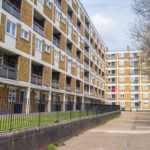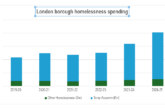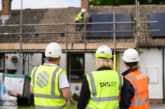 Matthew Warburton, Policy Advisor at the Association of Retained Council Housing (ARCH), discusses the implementation of Awaab’s Law and the proposed changes to the Housing Health and Safety Rating System.
Matthew Warburton, Policy Advisor at the Association of Retained Council Housing (ARCH), discusses the implementation of Awaab’s Law and the proposed changes to the Housing Health and Safety Rating System.
Under Section 42 of the Social Housing (Regulation) Act, now law, regulations must be made requiring social landlords to remedy certain hazards in tenants’ homes within specified periods. This scope of this provision, despite it being generally referred to as “Awaab’s Law”, is not confined to hazards caused by damp and mould. Ministers may, and are intending to, set timescales for responding to a range of hazards. Further details will become available when, in due course, draft regulations are published for consultation.
Hazards are not defined in the Act but the regulations will almost certainly draw on the definitions in the Housing Health and Safety Rating System (HHSRS), which describes 29 hazards that may be found in homes and a scoring system to assess the health risk associated with each of them. Scores are banded into four categories; a Category 1 hazard (the highest risk) automatically classifies a home as non-decent and demands urgent remedial action.
HHSRS has been in operation since 2006. In 2018 the Government considered whether there was a case for reviewing the system and concluded that it did. Feedback from the field found the assessment process to be complicated to apply and resource intensive, relying as it does on professionally qualified EHOs. Landlords and tenants alike found the system hard to understand.
Important changes
The review has now concluded, and in September the Government published a summary of the outcome. While the basic approach will be retained, some important changes are proposed, primarily to simplify the system and make it easier for non-professionals to understand.
Some of the hazard categories will be amalgamated to reduce the total number from 29 to 21. The banding system will be simplified and the category numbers replaced by descriptors — instead of from 1 – 4, these will range from “extreme” to “moderate”. The risk assessment system will be supplemented with a set of baseline standards that will make it easier for landlords and tenants to know whether hazards are present. And the technical guidance for assessors will be supplemented by tailored guidance for all stakeholders.
Decent Homes Review
The Government says it plans to introduce these changes once the Decent Homes Review concludes, which makes good sense if, as seems certain, the updated Decent Homes Standard retains the necessity for a decent home to be free of any extreme health hazard. While there was some informal consultation on changes to the Decent Homes Standard earlier this year, the Government has said it will consult formally later this year, including a timetable for implementing the changes. Introduction of the regulations implementing Awaab’s Law is likely to take place in parallel, particularly if it uses hazard definitions and standards taken from the new HHSRS.
The changes proposed to the HHSRS, particularly the idea of baseline standards to help demystify and replace the complexities of the risk assessment process, hold out hope for a system that will be much easier for tenants, and their landlords, to understand and use, and to focus attention on the most urgent and important problems. Much will depend on the detailed drafting — we look forward to publication of the standards and guidance in full.










